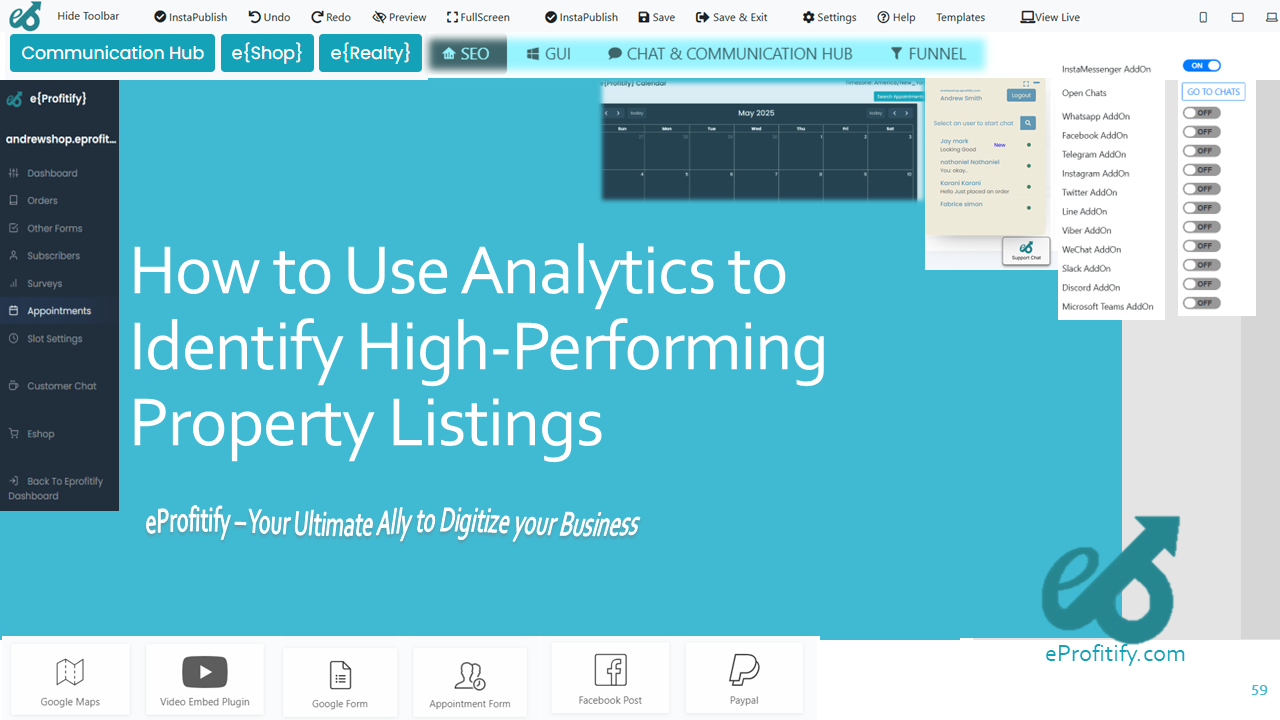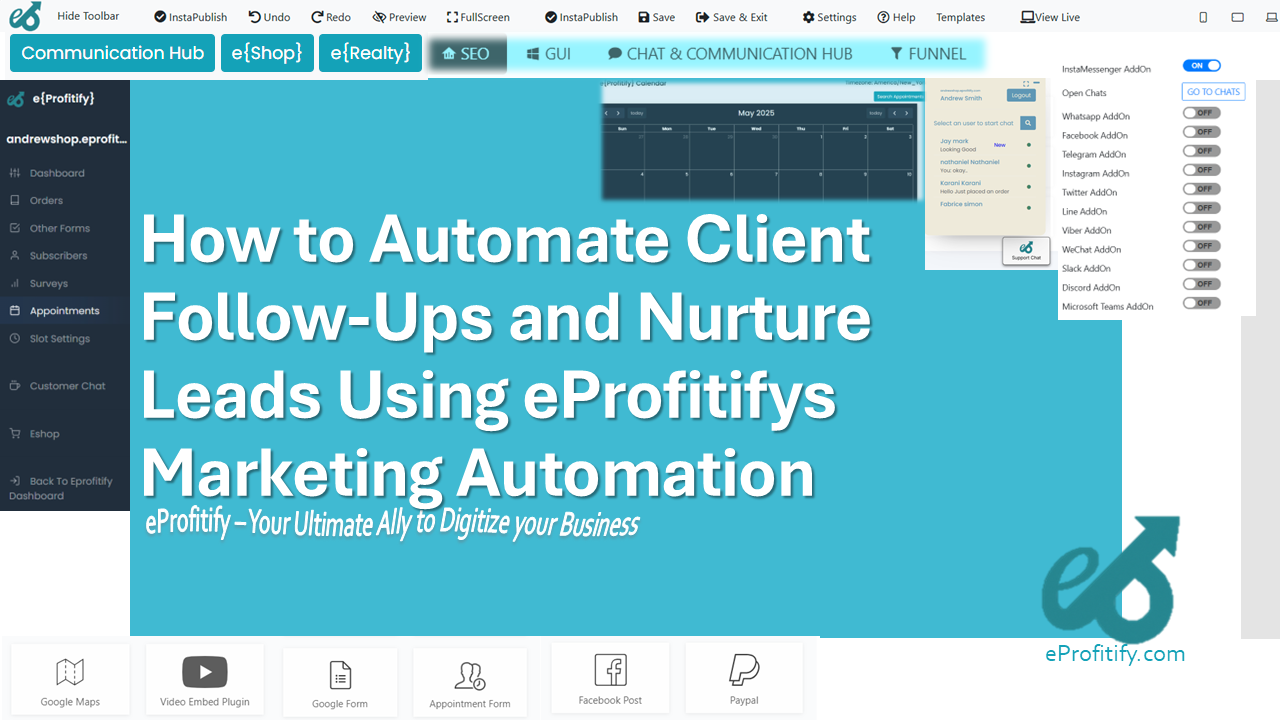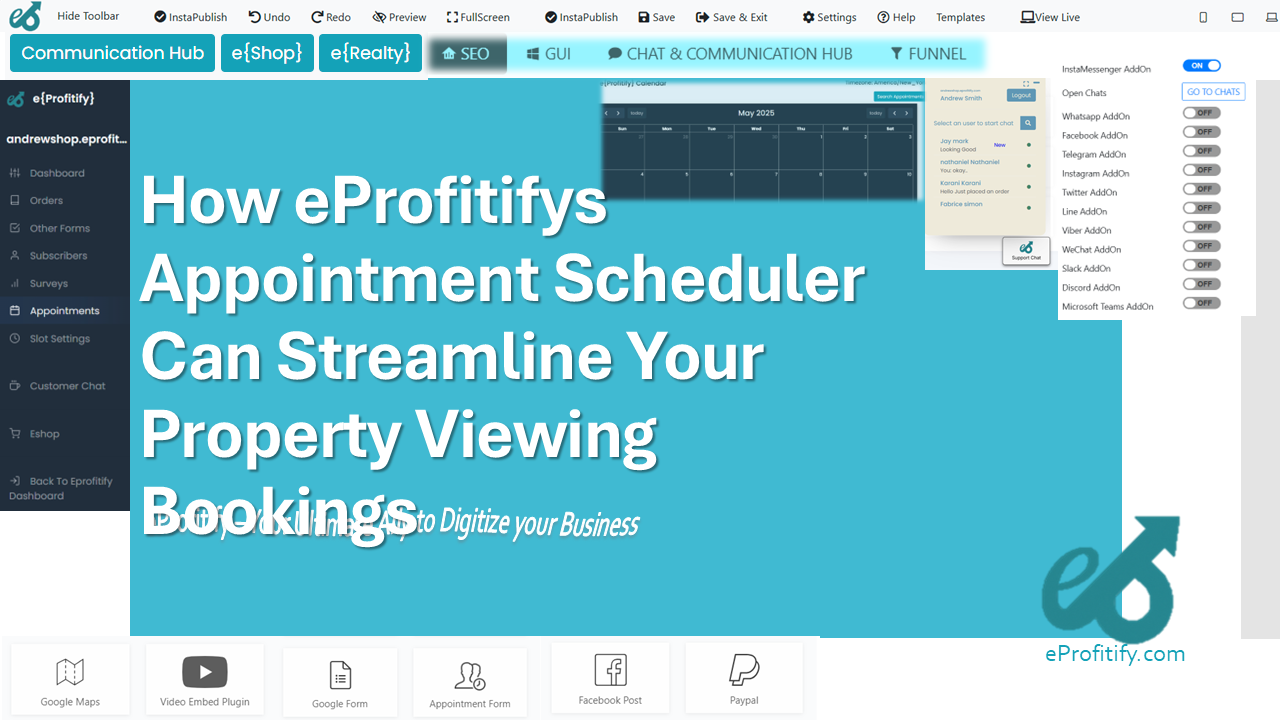How to Use Analytics to Identify High-Performing Property Listings

How to Use Analytics to Identify High-Performing Property Listings
The real estate industry thrives on visibility, efficiency, and data-driven decision-making. With over 5.64 million existing homes sold in the U.S. in 2023 (National Association of Realtors) and global real estate transactions surpassing $4.6 trillion annually, the competition to attract buyers and renters is fierce. In this landscape, analytics has become a game-changer for agents, brokers, and property managers. By leveraging data, professionals can identify high-performing listings, optimize underperforming ones, and stay ahead of market trends. This article explores practical strategies for using analytics to evaluate property performance and highlights how tools like eProfitify, a leading website publishing and management platform, streamline workflows through features such as instant messaging, CRM, and appointment management.
Why Analytics Matter in Real Estate
Analytics transforms subjective decisions into objective strategies. According to a 2023 study by the Center for Real Estate Technology & Innovation, 86% of top-performing real estate agencies rely on data analytics to refine their marketing tactics and pricing models. Here’s how analytics add value:
- Identify Buyer Preferences: Track which property features (e.g., square footage, location, amenities) resonate most with your audience.
- Optimize Pricing: Use historical sales data and market comparisons to set competitive prices.
- Measure Marketing ROI: Determine which platforms (Zillow, social media, etc.) generate the most leads.
- Predict Trends: Analyze seasonality, demographic shifts, or economic factors to anticipate demand.
Key Metrics to Track for High-Performing Listings
To maximize returns, focus on these critical metrics:
1. Website Traffic & Engagement
- Page Views: High traffic signals strong interest.
- Bounce Rate: A low bounce rate (<40%) indicates visitors are engaging with the listing.
- Time Spent on Page: Buyers spend 60% more time on listings with virtual tours (National Association of Realtors, 2023).
Action: Optimize listings with professional photos, videos, and clear descriptions. Use tools like eProfitify’s website builder to create mobile-responsive pages that load quickly.
2. Conversion Rates
- Lead Generation: Track inquiries via forms, calls, or chatbots.
- Click-to-Call/Email Rates: Listings with integrated contact buttons see a 30% higher conversion rate (RealTrends, 2022).
Action: Use eProfitify’s instant messaging and CRM to automate responses and nurture leads.
3. Days on Market (DOM)
Properties listed with accurate pricing and compelling visuals sell 50% faster than those without (Zillow, 2023). A rising DOM may indicate overpricing or poor content quality.
Action: Adjust pricing based on analytics dashboards and refresh outdated photos or descriptions.
4. Customer Demographics
Use CRM tools to segment leads by age, income, or location. For example, millennials account for 43% of homebuyers (NAR, 2023) and prioritize tech-enabled interactions.
Action: Create targeted ads or personalized email campaigns using eProfitify’s CRM integration.
5. Social Media Performance
Listings shared on Instagram and Facebook generate 2x more engagement than text-only posts (HubSpot, 2023).
Action: Schedule social posts via eProfitify’s content management system and track shares/likes.
Tools & Techniques for Advanced Analytics
While platforms like Google Analytics offer baseline insights, specialized tools like eProfitify provide end-to-end solutions tailored to real estate.
Why eProfitify Stands Out
eProfitify combines analytics with operational efficiency through:
- Unified Dashboard: Track traffic, leads, and conversions in real time.
- Instant Messaging: Engage leads 24/7 with automated responses.
- Appointment Management: Sync showings, inspections, and meetings without double-booking.
- Ecommerce Integration: Sell add-ons like home warranties or staging services directly from listings.
- CRM: Store client data, track interactions, and forecast sales pipelines.
A 2023 survey by Real Estate Tech Review found that agencies using eProfitify reduced administrative tasks by 40% and increased lead conversion by 22%.
A/B Testing
Test variations of listing headlines, images, or CTAs. For instance, listings with "Move-In Ready" in the title sell 15% faster (Redfin, 2023).
Heatmaps
Tools like Hotjar reveal which parts of a listing page attract the most attention, helping you prioritize key details.
Use Cases: Analytics in Action
Case 1: Optimizing a Stagnant Listing
A property in Miami had 1,000+ views but no offers. Analytics revealed a high bounce rate (70%) and poor-quality photos. After uploading professional images and adding a virtual tour via eProfitify’s media tools, the bounce rate dropped to 35%, and the property sold in 10 days.
Case 2: Targeting the Right Audience
An agent in Austin used eProfitify’s CRM to segment leads by budget and location. By tailoring email campaigns to millennians seeking suburban homes, open rates increased by 50%, resulting in three closed deals in a month.
Conclusion
Analytics is no longer optional in real estate—it’s essential for surviving a competitive market. By tracking metrics like engagement, conversions, and customer demographics, agents can refine their strategies and capitalize on high-performing listings. Platforms like eProfitify elevate this process by merging analytics with innovative tools for lead management, sales, and client communication. With features such as instant messaging, appointment scheduling, and CRM integration, eProfitify empowers agents to turn data into actionable insights while saving time and resources.
In an industry where 68% of buyers find their home online (NAR, 2023), adopting a data-driven approach isn’t just wise—it’s the key to staying ahead.








